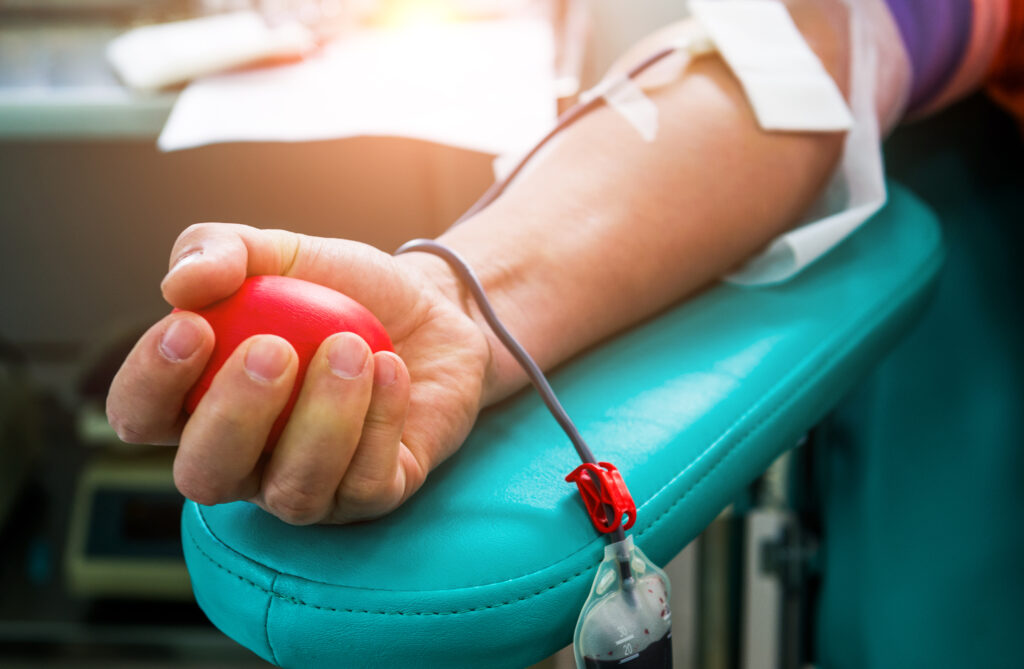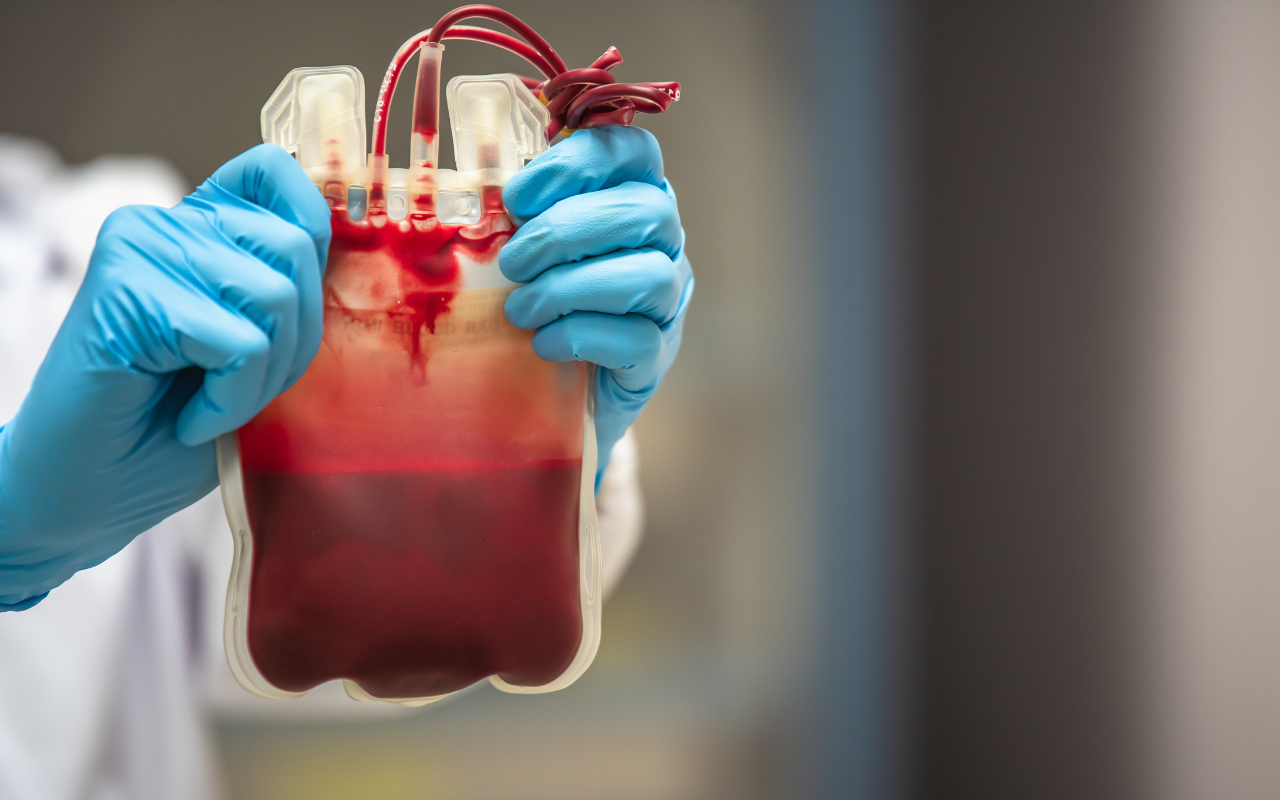A report into the UK’s infected blood scandal exposes shocking systemic failures.
It’s widely known as the biggest treatment disaster in the UK’s National Health Service (NHS). The infected blood scandal, which emerged in the 1970s and 1980s, resulted in thousands of patients being infected with human immunodeficiency virus (HIV), hepatitis C virus (HCV) and hepatitis B virus through contaminated blood products. In late May 2024, a final inquiry report was released.
Chaired by Sir Brian Langstaff, the inquiry began in 2018 and has examined the circumstances that led to the widespread distribution of infected blood and blood products. Key focus areas included the decisions made by government bodies, the role of pharmaceutical companies, and the failures in the health care system that allowed it to occur.
Medicine and Health Scientia Professor John Kaldor from the Kirby Institute at the University of New South Wales told InSight+ that it’s a significant report.
“It’s now 30 to 40 years since the events took place. I think it is really important that these systemic failings have come to light, even many years after the fact,” he said.
The report found that the infections of over 30 000 people with HIV and hepatitis could have largely been avoided.
“The scale of what happened is horrifying. The most accurate estimate is that more than 3000 deaths are attributable to infected blood, blood products and tissue,” Sir Langstaff wrote in his report.

How did it happen?
The report detailed a litany of unacceptable risks, some of which included importing blood products from high-risk prisoner and intravenous drug user donors abroad and accepting blood donations from UK prisoners until 1986. The report said this was due to systemic, collective and individual failures in dealing with the risk of infections being transmitted in blood.
During this time, knowledge about hepatitis and HIV was still evolving. Although the risk of acquired immunodeficiency syndrome (AIDS) being a bloodborne disease was first known in 1982, it took until 1985 for blood products to be heat-treated to inactivate HIV. Hepatitis C wasn’t discovered until 1988, however it was known from the mid-1970s that non-A non-B hepatitis (as it was known before 1988) was responsible for most post-transfusion hepatitis cases and may lead to serious long term health consequences.
The inquiry report detailed failings including: “falsely reassuring the public and patients – that blood did not carry AIDS; that the risk of AIDS for people with bleeding disorders was small; and that non-A non-B Hepatitis (Hepatitis C) was relatively mild and inconsequential.”
Other failures including delaying the universal screening for HIV and hepatitis C, and failing to tell people about the risk of treatment or alternative treatment options.
In his accompanying letter to the Cabinet Office Minister, Sir Langstaff said: “A level of suffering which is difficult to comprehend, still less understand, has been caused, and this harm has been compounded by the reaction of successive governments, NHS bodies, other public bodies, the medical profession and others as described in the Report.”
Has this happened in other countries?
The UK is not alone in having such a scandal. Countries such as France, Canada, Japan and the US have all had their own infected blood issues with varying investigations and outcomes.
Lifeblood’s Chief Medical Officer Dr Jo Pink explained to InSight+ that in Australia, how we collected and tested blood donations differed to the UK.
“In some countries, blood plasma was imported from donors who were later found to be at a higher risk of exposure to HIV and hepatitis C. Australia had a policy of self-sufficiency in blood supply and sourced donations from Australia only,” she told InSight+.
However, it didn’t mean Australia was immune. A Senate inquiry in 2004, Hepatitis C and the blood supply in Australia, noted that the Australian Red Cross Blood Service (now known as Lifeblood) “estimated that between 3500 and about 8000 Australians live with HCV [hepatitis C virus] infection derived through blood transfusion, including an estimated 1350 haemophiliacs.”
Dr Pink told InSight+ that it was not until 1988 that the hepatitis C virus was identified. “The first specific antibody test for hepatitis C became available in early 1990. Australia was one of the first countries in the world to implement a hepatitis C antibody test in February 1990,” she said.
Dr Pink explained: “There was a significant divergence of scientific opinion internationally as to whether plasma which tested positive to the newly developed anti-HCV test should be used for the manufacture of plasma products. There was a very high rate of false positive results and the majority of those that tested positive were not infected with hepatitis C.
“At that time, it was not known whether hepatitis C antibodies were protective and for this reason there was a concern that if all the plasma containing hepatitis C antibodies was removed from plasma for fractionation, that the remaining plasma may have a higher risk of passing on hepatitis C. At that time hepatitis A and hepatitis B immunoglobulin products were being used, as they still are today, as passive immunisation to prevent infection following an exposure event,” she said.
The 2004 Senate inquiry stated that a history of receiving blood products before blood donor screening had begun is likely to account for many people who were infected with HCV and weren’t injecting drug users. “People with haemophilia who received fractionated plasma derivatives before heat treatment procedures were implemented were particularly at risk of being infected with HCV,” the report said.
“A course of action [was] decided for those impacted, now many decades ago, similar to many countries, which the Red Cross Blood Service was involved in,” Dr Pink told InSight+.
This included an investigation where donations from donors who were identified as having hepatitis C were traced to determine whether the patient who received their blood donation had become infected.
In addition, instances where patients were thought to have acquired HCV infection from transfusion were notified to the Red Cross Blood Service, who then followed up the donors who provided the blood to determine if they were infected with HCV.
“Australia was also one of the first countries to introduce screening for HIV; this was implemented in 1985. Prior to the availability of the HIV test, Australia introduced restrictions to prevent gay and bisexual men from donating. For this reason, the rate of HIV transfusion transmission was substantially lower than in many other developed countries,” Dr Pink explained.
The inability for men who have sex with men to donate blood and blood products persists in many jurisdictions around the world and has contributed to social stigma faced by this group. However, there have been recent changes in Australia. The Therapeutic Goods Administration have approved a submission by Lifeblood to allow everyone, regardless of their sexual activity, to donate plasma without any wait period. Lifeblood is also introducing a gender-neutral approach to donor risk assessment, where all donors are asked the same questions, regardless of their gender.
What we can learn from the UK report
According to Professor Kaldor, the processes of blood collection, screening and processing have massively improved. However, there will always be some level of risk in receiving blood and blood products.
“The way the blood system works, it operates primarily under three strategies. One is you reduce the number of people that are giving blood who are likely to present a risk of one or more of the different agents. Secondly, you screen for the agents that you know about,” he explained. Thirdly, “for plasma products, the processing steps are also highly effective in removing infectious agents such as viruses,” he said.
However, if you’ve got a well established group of donors, you’re in a stronger position to respond if a threat starts to appear.
“If a new infectious agent appears that we don’t know about, then I don’t think we can say that there’s a 100% guaranteed way to prevent its incursion into the blood bank system until we explore it and characterise it and understand who’s at most risk among the donor population.
“It is also important for blood agencies to communicate well about any risk that’s been detected. Not to do so ultimately reduces trust in the system,” he said.
According to Dr Pink: “This issue is an important reminder of why we should never take our blood safety measures for granted.”
“Australia has one of the safest blood supplies in the world due to our combined screening of donors and testing of blood, and the safety of Australia’s blood supply is Lifeblood’s top priority,” she concluded.
Subscribe to the free InSight+ weekly newsletter here. It is available to all readers, not just registered medical practitioners.

 more_vert
more_vert
The Queensland Red Cross Blood Service was the last state to abandon BMI adjusted ALT enzyme testing in the early 1990s as a surrogate test for Hepatitis C until more highly sensitive and highly specific screening tests for the virus were technically and practically available. Queensland was the only state to establish a hospital based state wide autologous blood collection service accounting for about 5% of all blood collections at the same time in risk management. Ir worked in close cooperation with the Qld Red Cross Blood Service who provided the protocols, the testing and IT support and collection hardware for the service.
Also, all stock of frozen blood products were kept in total isolation from the exact date that antibody HCV testing was available and was only released after the blood donor was retested with the new testing platform.
All blood donors who tested positive were excluded from further donating, were counselled privately and all their earlier blood donations were fully traced through by a carefully recorded ‘look back’ procedure and all the recipients notified and followed up medically.
Blood is absolutely vital for all hospital emergency and elective functioning and no safer alternative has yet been developed. Blood supplies now thanks to do or screening and PCR testing are safer than they have ever been in history however, as Jo Pink has pointed out, a sudden pandemic of an as yet unknown virus is always a threat and that threat is at the forefront of transfusionists minds constantly.